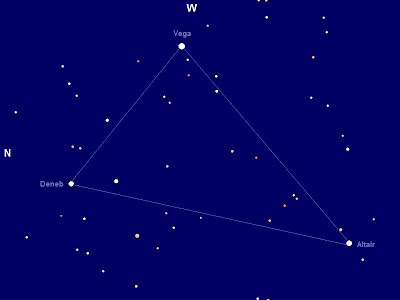
If you're up late, say 11pm or midnight, look for the moon low in the east. Immediately to its upper right is a cluster of stars known as the Pleiades. If the glare of the moon interferes with your view of this bright cluster, use your hand to block off the moon.
The Pleiades, also known as the Seven Sisters, is one of the few clusters visible to the naked eye under city skies. At least 6 stars are visible even without binoculars.











